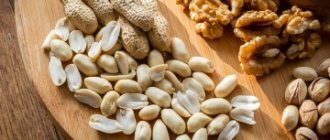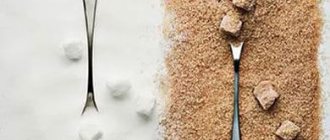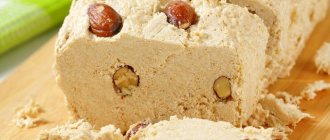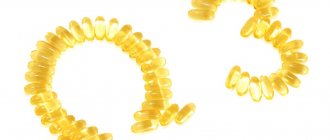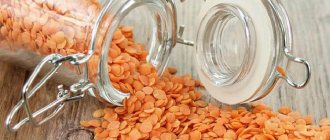Doctors are still arguing whether or not a woman can eat cauliflower during lactation. Breastfeeding experts say that it can cause allergies and colic. Pediatricians, on the contrary, advise diversifying the menu of a nursing mother with this healthy vegetable. When introducing this product, you should definitely pay attention to its quality, safety of the variety and method of preparation.
Composition and beneficial properties
The vegetable is suitable for the diet of a nursing mother, since it contains a large amount of vitamin C (more than citrus fruits). It is also a source of vitamins A, B, PP, E, as well as folic acid and biotin. In addition to vitamins, cabbage fills the body with such microelements as: potassium, calcium, magnesium, phosphorus, iron, copper, fluorine, zinc.
- When breastfeeding, the vegetable helps to establish processes in the body of mother and child, namely:
- improves intestinal function and accelerates the absorption of beneficial microelements;
- helps cleanse the vascular system and the body as a whole;
- the calcium contained is indispensable in the formation of the child’s skeleton and strengthening the mother’s bones;
- reduces the risk of cancer by 5 times with regular use;
- has a beneficial effect on the intestinal microflora and is easy to digest, thereby preventing the occurrence of ulcers and gastritis;
- has a beneficial effect on the immunity of mother and child, which makes them more resistant to flu and colds;
- normalizes the functioning of the nervous system.
The product is low-calorie, 100 g contains 30 kcal, which does not affect weight gain. The nutritional value of 100 g of product is 2.5 g of protein, 0.3 g of fat and 5.4 g of carbohydrates.
Did you know? A woman's body is able to change the composition of milk depending on the needs of her child and environmental conditions.
The vegetable does not contain coarse fiber, but consists of a fine cellular structure, due to which it has a positive effect on the functions of the liver and biliary tract, and normalizes stool.
By introducing this product into the diet, a nursing mother does not have to worry about whether it causes colic. The main rule of nutrition when feeding an infant is to introduce the product gradually and not to overeat.
Healthy recipes
The most famous recipe is fried in breadcrumbs or in the form of pancakes. Since fried foods are undesirable in a breastfeeding diet, the vegetable should be steamed, boiled, baked or stewed. For a skilled housewife, this will not take much time and will become a tasty and healthy dish, even if exotic spices are avoided.
You can boil it in low-fat dietary chicken broth and season with a small amount of a mixture of ground peppers, cook in a soup without frying with carrots and potatoes, sprinkle and mix with unsalted feta, prepare a dressing from boiled yolk and olive oil, making a salad of cabbage, boiled potatoes and piece of turkey meat.
You can stew cabbage either individually or in combination with potatoes, carrots and a small amount of onions, as well as in low-fat milk with carrots or in vegetable oil with potatoes and half a small onion.
You can bake cauliflower in one simple way - already boiled on a broiler in the oven, but you can add a new flavor note each time using low-fat cream, cottage cheese, mild hard cheese, low-fat feta, diet sour cream or sour milk. You can add greens, but little by little and carefully.
A very tasty casserole made from boiled cauliflower, sour cream, sweet apples, raisins, eggs and a pinch of cinnamon. It will successfully replace any forbidden dessert.
When creating an individual diet for a nursing mother, you should not listen to common misconceptions or categorical recommendations. It is better to listen to the advice of a doctor who will help you draw up a list of permitted foods, taking into account the condition of the baby and the health of the mother, who provides him with nutrition in the first months of his fragile and defenseless state. But any sane pediatrician will be bewildered by the question whether a nursing mother can eat cauliflower.
It would be wrong and unreasonable to refuse such a useful product with so many vital and beneficial substances if there is no individual allergic reaction to it. Not in kilograms, not to the point of unhealthy belching, but in reasonable quantities and properly prepared, cauliflower is not only possible, but also necessary to be introduced into the diet of a nursing mother for the health of her and her baby.
How to introduce it into the diet?
When breastfeeding, you should not suddenly start eating cabbage in full. First you need to eat a few spoons of the decoction and observe the reaction of the child’s body throughout the day. The baby's body is not yet strong and may react to new foods with intestinal problems or skin rashes.
If such symptoms are noticed, it is better to delay introducing the vegetable into food and try again a month later.
If the baby’s body reacts positively to the novelty, you can gradually increase the amount of food eaten.
Important! Eating cabbage raw can not only lead to indigestion in mother and child, but also cause poisoning. Therefore, the vegetable must be heat treated.
How to choose and store correctly
Broccoli and cauliflower are very beneficial for breastfeeding due to their protein content. They can easily replace meat dishes for vegetarians. But you need to be able to choose the right crop in which all the beneficial properties are preserved.
Judging by the reviews of cauliflower lovers, its leaves should be green and not limp, without traces of insect activity, any spots, or yellowness. This indicates that the vegetable was picked recently and is fresh. The inflorescences themselves can be white, yellowish or greenish. Dark spots on them are a sign that the cabbage has begun to deteriorate. This vegetable should not be eaten. It is not recommended to store cabbage in the refrigerator for more than a week. But you can freeze the inflorescences. Moreover, all the beneficial qualities will be retained even after defrosting by a wonderful vegetable - cauliflower.
When breastfeeding, the recipe for preparing it must necessarily contain a heat treatment step. The inflorescences can be boiled, stewed, baked in the oven, cooked in a slow cooker or steamed.
How to use it correctly?
If you decide to add cauliflower to your diet, then to prepare it, choose only those recipes in which the vegetable is not fried. Such foods are fatty and harm the stomach. The best dishes during lactation are considered to be stewed, boiled, baked cabbage, as well as soups made from it.
The optimal amount of vegetable consumption during the habituation period is 50 g per day. Overeating can cause bloating in a child. The dosage should be gradually increased to 200–250 g per day, and it is better to use it no more than 3 times a week.
When buying a vegetable at the market or in a store, try to choose inflorescences with green leaves and light-colored heads. The stem should be soft and tender; any hardening indicates a stale or old vegetable. Inflorescences should be closed, without flowers.
Did you know? Cauliflower
—
favorite vegetable of the British. Mark Twain once called her “a cabbage with a higher education.”
How to cook cauliflower while breastfeeding
The undeniable value of cauliflower for a nursing mother is that the vegetable can be prepared very quickly, it does not require special long-term processing, and you can “build” a healthy lunch and light dinner from it.
The easiest and fastest side dish
Just boil the cabbage inflorescences in salted water so that it does not lose color, you can add a slice of lemon to the boiling water.
The sauce will help diversify and improve the taste - melt 15 g of butter over low heat, add 15 g of flour, pour in 150 ml of milk, stirring constantly. Cook over low heat until thickened.
Vegetable stew
Let's take the ingredients:
- potatoes - 1 large tuber or 2 medium ones;
- carrots, zucchini - 1 pc.;
- cauliflower – 150-180 g;
- greens, salt.
Cut the peeled potatoes and zucchini into small cubes, grate the carrots, finely chop the greens, and separate the cabbage into inflorescences.
Pour some water into a saucepan or deep frying pan, let it boil, throw in the carrots, after 2-3 minutes add the potatoes, after another 4-5 minutes – cabbage and zucchini. Cover with a lid, reduce heat, simmer for 7-10 minutes until all vegetables are soft. Before serving, add salt and herbs.
Light soup _ _
Required Products:
- lean beef or chicken without skin and bones – 350 g;
- potatoes – 3 pcs.;
- cauliflower – 250 g;
- carrots – 1 pc.;
- hard cheese – 30 g;
- water – 2 l;
- fresh or dried herbs.
How to cook:
- Boil the meat until cooked - beef will take about 2 hours, chicken will cook in 20-30 minutes.
- Take the meat out of the broth, chop it finely, throw it back into boiling water, add peeled, finely chopped potatoes.
- Separate the cabbage into small florets and add to the potatoes after 10 minutes.
- Three carrots on a fine grater, add to the rest of the vegetables after a quarter of an hour.
- In 8 minutes the soup will be ready. Before serving, sprinkle it with grated cheese and finely chopped herbs.
Casserole
A great option for a quick dinner, we will need:
- cauliflower – 350 g:
- fine-grained low-fat cottage cheese – 150 g;
- quail eggs – 6-7 pcs.;
- hard cheese – 130 g;
- chopped walnut kernels – 35 g;
- butter – 15 g.
We separate the cabbage into inflorescences, finely chop it with a knife, three cheeses, combine both ingredients, add cottage cheese, cheese, nuts and eggs. Beat everything in a blender - we should get a homogeneous thick mass. If you don’t have a blender, don’t worry, even without whipping the dish turns out very tasty, the vegetable taste is clearly felt.
Grease the mold with oil, place the resulting mixture, put it in the oven for 20 minutes, the temperature in the cabinet should be 170-180 degrees.
Juicy cutlets
An original idea for lunch or dinner. We will need the following products:
- cauliflower – 400 g;
- bread crumb – 30-40 g;
- egg – 1 pc.;
- onion – 1 pc.;
- greens, salt.
Separate the cabbage into inflorescences, boil in salted water with a slice of lemon until tender, this is about 8-10 minutes, cool, and chop in a blender. Soak the bread in water or milk, squeeze it out, combine it with the cabbage mixture, add an egg, finely chopped onion and herbs, and salt. Mix and leave the minced meat for a quarter of an hour.
Turn on the oven to 180 degrees, cover the baking sheet with foil, form small cutlets from the minced meat with wet hands, and place in the pan. Bake for half an hour until a golden brown crust appears.
If desired, you can mix cabbage with an equal amount of minced chicken or turkey.
Roasted Cauliflower Salad
This dish is not a shame to serve to guests, and its preparation requires a minimum set of ingredients:
- cauliflower – 350 g;
- boiled chicken meat – 80–100 g;
- walnuts – 30 g;
- olive oil – 30 ml;
- salt, lettuce leaves.
Place the cabbage disassembled into inflorescences in boiling water for 2-3 minutes, drain in a colander, place on a baking sheet, and pour in oil. If your baby is not allergic to citrus fruits, you can sprinkle orange zest on top of the dish - the aroma will be incredible.
Bake the vegetable at a temperature of 160-170 degrees for 7-10 minutes, then sprinkle it with chopped walnuts and place in the oven for another 5 minutes.
Tear the lettuce leaves with your hands, add small pieces of meat, prepared cabbage, season with oil and salt. You can add a little lemon or orange juice to the dressing.
Contraindications for use
After the birth of the baby, the mother is obliged to change her eating habits for a while. Many foods are prohibited, but cauliflower is not on this list.
- But a safe product may become prohibited if:
- the baby has individual intolerance;
- the mother or child has allergic reactions.
When this product is introduced into the diet, symptoms such as rash, diarrhea or constipation indicate that the body does not accept it. If the body’s reaction is too violent, it is better to exclude the vegetable for at least 6 months.
This variety of cabbage is a storehouse of nutrients for mother and child. In order not to harm the body of a breastfed baby who receives nutrients from mother's milk, when introducing cauliflower into the diet, carefully monitor the baby's condition. If everything is in order and no negative reactions are noticed, feel free to eat this unique vegetable.
Rules for use during breastfeeding
This culture is very useful for the human body, so a nursing mother can safely include it in her diet. However, during this difficult period, as with any product introduced into the menu, it is recommended to follow certain rules so that a healthy vegetable does not turn into the cause of negative manifestations in a child:
- in the first two months of a newborn’s life, it is better to hold off on eating raw or fried cauliflower;
- It is advisable to introduce soups, as well as boiled and stewed dishes into the menu no earlier than 3 weeks after birth;
- After introducing the baby to a new product that has entered his body along with mother’s milk, you need to closely monitor the baby’s well-being. If any negative reactions are noticed, then you will have to wait a little while eating cauliflower;
- if the first attempt to try a vegetable fails, then the turn of the next one may come no earlier than in a month;
- In any product you must follow the recommended dosage. The maximum portion of cauliflower per day should not exceed 200g, since an excess of the vegetable can cause bloating in a newborn;
- Mommy should carefully adhere to the ritual of preparing food for cooking. The surface of cauliflower is rough and dirt can get between its pores, so you need to wash the vegetable thoroughly.
By adhering to the rules for consuming a healthy crop and following the dosage, you can easily answer the question of whether cauliflower can be eaten by mothers with breastfeeding. The answer will be yes.

